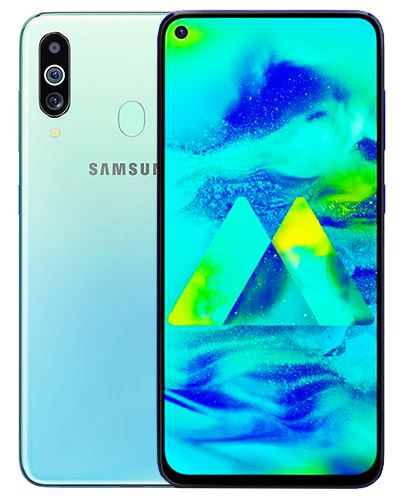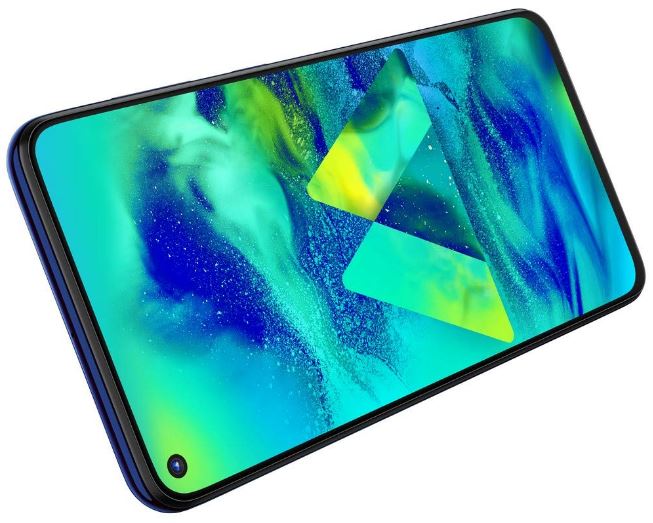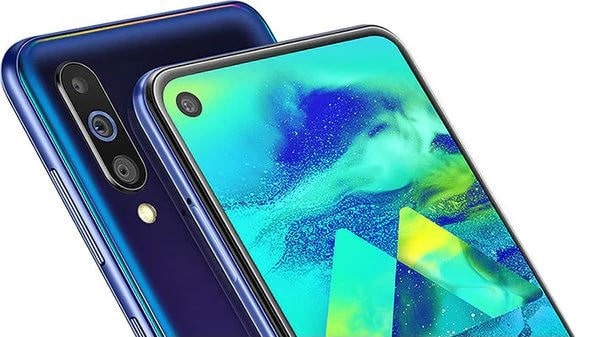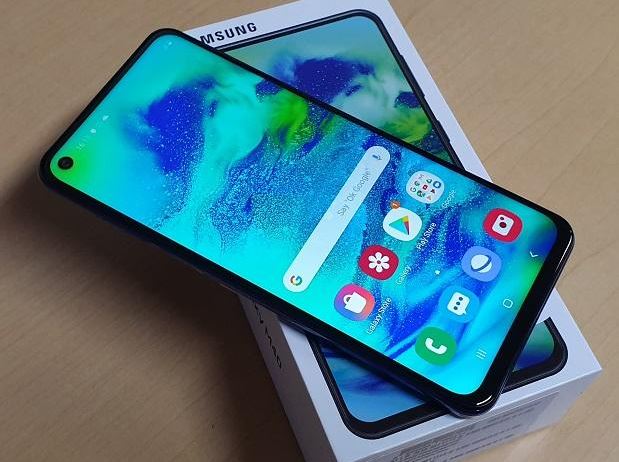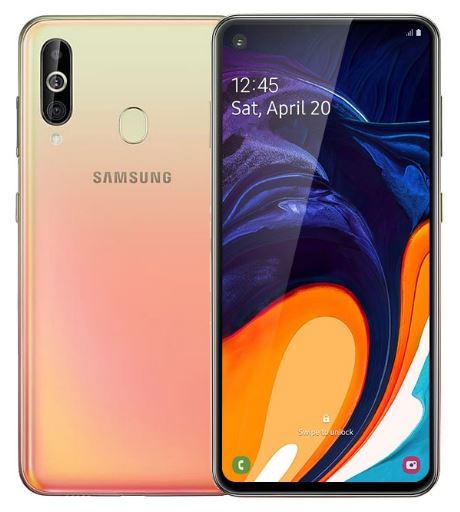Samsung’s first three smartphones in Galaxy M-series were Galaxy M10, M20, and M30 that got a tremendously positive response from the audience and enabled Samsung to sell out more than 2 million units in a couple of weeks. The reason behind the success of these phones was their state-of-the-art designs and hardware at competitive enough prices to leave behind brands like Realme and Xiaomi. The Samsung Galaxy M40 UK, however, is the fourth smartphone in M-series and interestingly, it has maintained that aggressive run too. The most appealing feature that really entices the audience is its Infinity-O display with a punch-hole to sport a front-facing camera. Perhaps, it’s the world’s first smartphone that holds up an Infinity-O display alongside a small cut-out in a budget segment. Besides, it’s loaded with a mid-range Snapdragon Chipset, a Triple Camera Configuration, 6.3-inches Display and up to 6GB of RAM. Well, there are some trade-offs as well, i.e. lack of AMOLED panel, 3.5mm headphone jack and a small amount of battery. But all these sacrifices don’t hurt Galaxy M40 any further – thanks to its lower price tag. What else makes it stand out from a crowd? Let’s find out in our Samsung Galaxy M40 review below.
Price and Availability:
Officially Launched in May 2019 Starting Arriving on Stores in the UK in June 2019 The Galaxy M40 Price UK is £-220-270
The official Samsung Galaxy M40 release date UK was back in May 2019 – very much like other countries, i.e. China, India, the US, Canada, Australia, and many European countries. However, it started arriving on shores in the mid of June 2019. As for Samsung Galaxy M40 Price UK, it’s available at £220 if you buy one with 4GB RAM and 64GB storage whereas 6GB/128GB variant set users back £270. When it comes to comparing Galaxy M40 with others with the same price tag, you will have an option to consider buying Redmi Note 7 Pro or Asus Max Pro M2 that are even slightly lower as compared to Galaxy m40.
Design:
The Rear Looks Similar to Other M-Series Devices Measures 6.11” x 2.91” x 0.31” and Weighs 168g
[ngg src=”galleries” ids=”21″ display=”basic_slideshow” arrows=”1″] A new Infinity-O screen, a first for a Galaxy M phone, is displayed on the front of the Galaxy M40. Very much like Samsung Galaxy S10, it’s sporting a small cut-out on the top corner of the display which flaunts a selfie snapper. This solution removes the need for a notch to reduce the distraction during display viewing. The bezels around the Galaxy M40 are smaller compared to the Galaxy M30 so that you get more real estate for your screen. The screen of the Galaxy M30 is 0.1-inch smaller, but it’s too hard to find the difference. Also, the Galaxy M40 has a slightly smaller shape factor and a thinner 7.9 mm profile that make it feel good in the hand. The Galaxy M40’s back panel looks similar to other Galaxy M devices. Thanks to 2 new gradients – Midnight Blue and Seawater Blue – this still manages to look fresh. The Midnight Blue unit offers a dark blue colour almost all over the panel, while the curved borders give a lighter blue shade. The effect looks pretty good, it is almost a dual-tone effect. The Seawater Blue has a light blue gradient that is also very attractive. A fingerprint sensor is mounted on the back which enrolls your fingerprint extremely quickly. The fingerprint is joined with a triple camera configuration which is positioned vertically on the top left corner of the phone. The power button and volume rockers, however, are placed on the right side, and they are easy to reach. By not including the 3.5mm headphone jack in the Galaxy M40, Samsung made a bold decision, which probably won’t be well-done in a segment that still sees the love for the jack. The port removal does not seem to have any advantages because the battery capacity is smaller than the M30, and it’s not as slim as the Galaxy A50. Samsung has tried to compensate by offering Type-C earphones in the box. The Galaxy M40 is compatible with a hybrid SIM slot and has one speaker grill on the bottom. Samsung removed the earpiece to reduce the top bezel, choosing a sound technology on screen, which mainly means the sound is being provided from beneath the display. The quality isn’t as good as expected, and it lacks a precise clarity.
Display:
3-inches display with 1080 x 2340 Pixels Resolution Infinity-O Display with Punch-hole for Selfie Snapper 9% Screen-to-body Ratio
That’s where it gets difficult. Although the first segment punch-hole display is offered by Samsung, which is unique in appearances, the company has also made a deal. Samsung used an LCD panel for the Galaxy M40 rather than a Super AMOLED display like it was with the Galaxy M30. Although Samsung displays are generally some of the best in the business, this LCD display doesn’t offer richness, depth of colours and appeal that offered by AMOLED display. You can say right outside of the bat that the colours on the screen appear a bit blurred and washed out on the Galaxy M40 in comparison with the deep and bright colours – offered by Galaxy M30. The blacks aren’t as dark and deep as you would expect, particularly disappointing because One UI comes with a system-wide Night mode on AMOLED screen that looks great. That said, the 6.3” display with 1080 x 2340 pixels resolution from the Galaxy M40 still offers outstanding sharpness with clear texts and sharp videos. Admittedly it looks good for an LCD panel.
Cameras:
32MP + 8MP + 5MP Rear Cameras with Panorama, HDR and LED Flash 16MP Selfie Snapper with 1080p Video Recording Capability at 30fps
In the portfolio of Samsung, Galaxy M40 is another phone that offers three rear cameras (including a broad-window lens). Triple camera configurations became a major component in 2019 when brands seek to provide flexibility. The 32MP primary camera with an f/1.7 aperture, an 8MP ultra-wide-angle camera with a 123-degree FoV and a 5MP depth camera are available on Samsung Galaxy M40’s back. The front, on the contrary, is equipped with a single 16MP camera – positioned in a small punch-hole on the top left side. The 32MP primary camera is designed to provide a clear and detailed image. You should note, however, that the camera shoots by default at 12MP resolution. By changing the aspect ratio from 3:2 to 3:2H, you can switch to full 32MP, but the difference in the image quality wouldn’t be clear. You cannot use auto HDR when you have to use the complete 32MP mode, too. The pictures look sharp and detailed during the daytime (unless you zoom in into the photos), although the contrast is lacking. The Galaxy M40 has a fast shutter and autofocus, which means that in the daylight you won’t get blurry images. The same is not true if you shoot indoors or in low light, because pictures often appear soft and blurry. Low-light shots can’t compete with what Redmi Note 7 Pro or Realme 3 Pro offers without a special night. The wide-angled lens can be easily changed by tapping on the button, which is always useful for capturing landscape pictures. The 8MP sensor is adequate to capture wide-angle shootings in daylight, but it’s not clear enough. The back and front cameras are supported by live focus to make real-time adjustments for background blurry. The 16MP Selfie camera is the best to average, with a washed-down colour and a flattering face. The blacks of hairs and skin tones don’t look natural because the Galaxy M30, which has a similar 16MP sensor, produced better results. In the meantime, the 25MP front camera of Galaxy A50 provides more sharp selfies. As for the video, there is no stabilisation of the primary camera on the Galaxy M40, therefore, expecting jitter-free and clean videos would be wrong. The camera is capable of recording videos up to UHD resolution (3840 x 2160).
Performance:
Qualcomm Snapdragon 675 Chipset 4GB RAM with 64GB ROM and 6GB RAM with 128GB ROM Adreno 612 GPU for Exceptional Graphics Android 9.0 Pie OS with One UI
Besides the punch-hole display, Samsung boasts another feature that this is the first Snapdragon M phone to run. The Snapdragon 675 2GHz octa-core processor coupled with up to 6GB of RAM is sufficient to ensure that the Galaxy M40 works properly on most daily tasks. It is a reliable processor because the Redmi Note 7 Pro runs with the same processor effortlessly. The phone feels pretty snappy out of the box. Apps can be opened quickly, and load times are quick too. Scrolling through the user interface is quick and tactile. The chipset can run games like PUBG & Asphalt 9 without a slowdown or jitters on medium-size graphics. However, consumers who take mobile gaming seriously and want to play in max graphics settings at this price, you should look at Pocophone F1 instead. There are also some One UI features that aren’t available in M40, such as a blue light filter and a home page of Bixby Home, which provide custom cards for relevant daily information. The reason why these features are missing is not yet known, but it’s most likely that Samsung will add all these features with future updates. The phone provides a 64GB/128GB internal storage, which seems more than enough to download and store loads and loads of files with ease. You can, however, extend it further to up to 512GB by using a microSD card if you feel that is not enough. The fingerprint sensor on the back is pretty snappy and precise. Face unlocking is available too, but indoor is not as fast and certainly not in low lighting conditions. The Type-C inbox earphones, especially with Dolby Atmos, enabled sound decent enough. If you have a more comfortable pair of wired earphones, you have to use a Type-C to 3.5 mm dongle, which is obviously a bit of work.
Battery:
3500mAh Battery with Fast Battery Charging 15W Smaller than Galaxy M20 and M30 Lasts Almost a Day with Casual Use
With gigantic 5000mAh batteries offered by Galaxy M20 and M30, it’s surprising that Samsung Galaxy M40 offers only a 3500mAh battery. This is downgrading and the fact that the Galaxy M40 will not last for a whole day with heavy usage. Well, you should leave about 25%-30% juice in the tank at bedtime with basic tasks such as messages and the browsing of social media throughout the day. Throw a game and video stream, and the battery should be drained faster during the day. Be noted that the Galaxy M40 is particularly suitable for standby, so in the morning every day, you are most likely to charge your phone. Most importantly, Samsung Galaxy m40 is backed by fast charging and you get a 15W charging brick which doesn’t take more than two hours to get it charged from 0% to 100%. Read Samsung Galaxy M40 Review from ANDROID AUTHORITY
